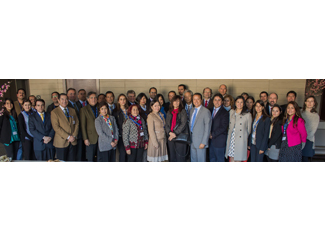consent_cookie
Duración: 1 year
Stores the user's cookie consent state
19-09-2013
The 2010 Haiti earthquake or the tsunami in Japan in 2011 are some of the natural disasters that have shaken the world in recent years. Volcanic eruptions , floods , hurricanes ... Nature is sometimes cruel and unpredictable. According to experts, the only way to improve human security goes through a risk management much more solid .
From this it has been talked about for three days in the forum ' Strengthening the Resilience to Disasters in Latin America' , held in Santiago, Chile by the United Nations Institute for Training and Research (UNITAR ) and the Development Bank Latin America.
With the aim of developing an international platform to exchange knowledge and good practices on disaster risk reduction and resilience to these , experts have identified the challenges for prevention and reviewed the best practices to reduce the vulnerability of the most threatened .
Experiences of Japan and Chile
The experiences of Japan and Chile, both suffering from an increasing impact of natural disasters in recent years , have been very important to promote the exchange of experiences and lessons learned.
" The best practices have been those that have focused not only on infrastructure but on sustainable development processes with high community involvement ," says Angela White , delegate of Human Spain in Ecuador and participating in the forum.
Human work in Ecuador is mainly focused on community development programs that place special emphasis on climate change adaptation . "The workshop helped us to know the current trends to build resilience to disasters in Latin America , very focused mainly in the cities and in adapting to climate change and sustainable development in rural areas ," says White .
According to the UN Office for Disaster Risk Reduction (UNISDR ) , the population of Latin America and the Caribbean has doubled in the last 30 years , but living in coastal areas vulnerable to natural hazards has almost triplicate. Latin America is also the most urbanized region in the world: nearly 80 % of its population lives in cities .
" There is a growing concentration of efforts to work in cities. Rapid urban growth in Latin America in recent years has led to a proliferation of highly vulnerable buildings in the cities , which places the population at risk . But we can not leave out the rural areas , especially considering climate change adaptation and its relationship with the cities in terms of food security, biodiversity conservation , a bridge that still needs to design and build , "says White .

